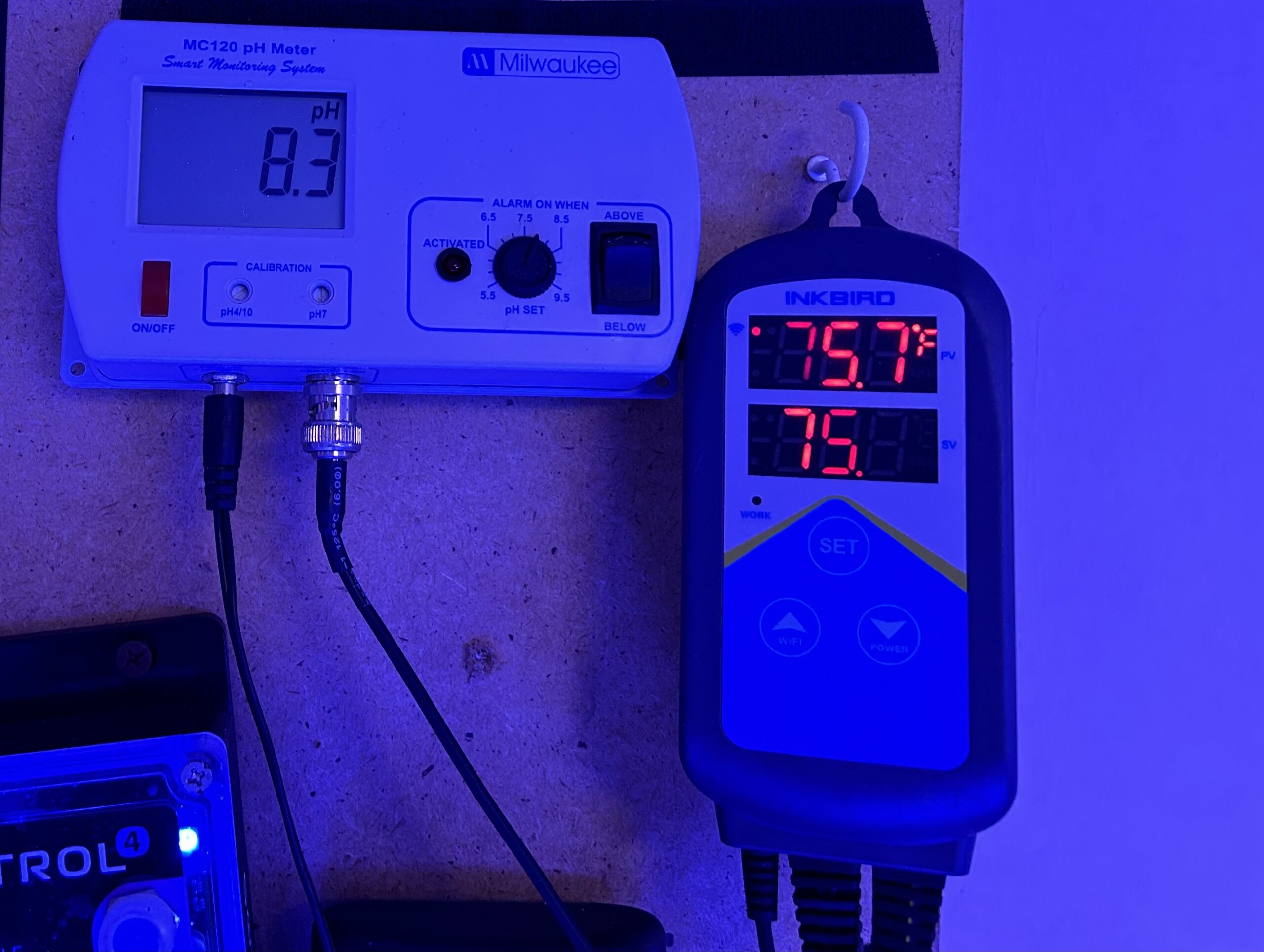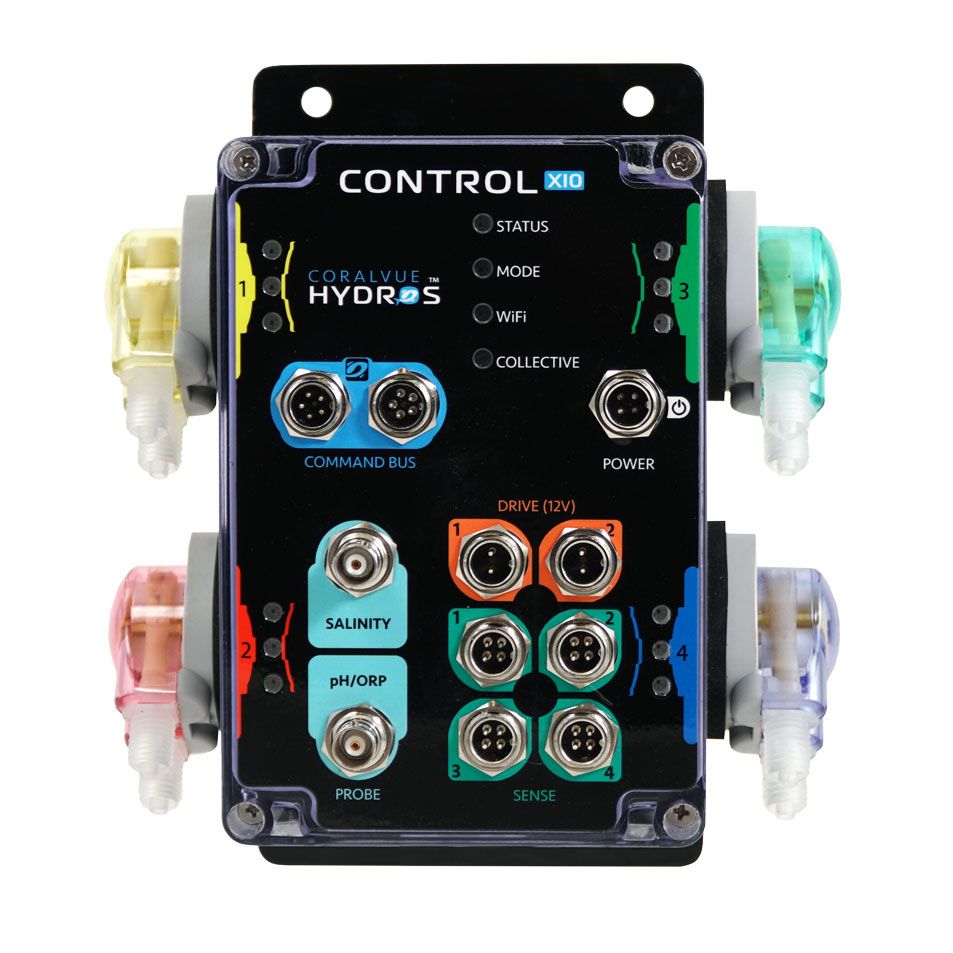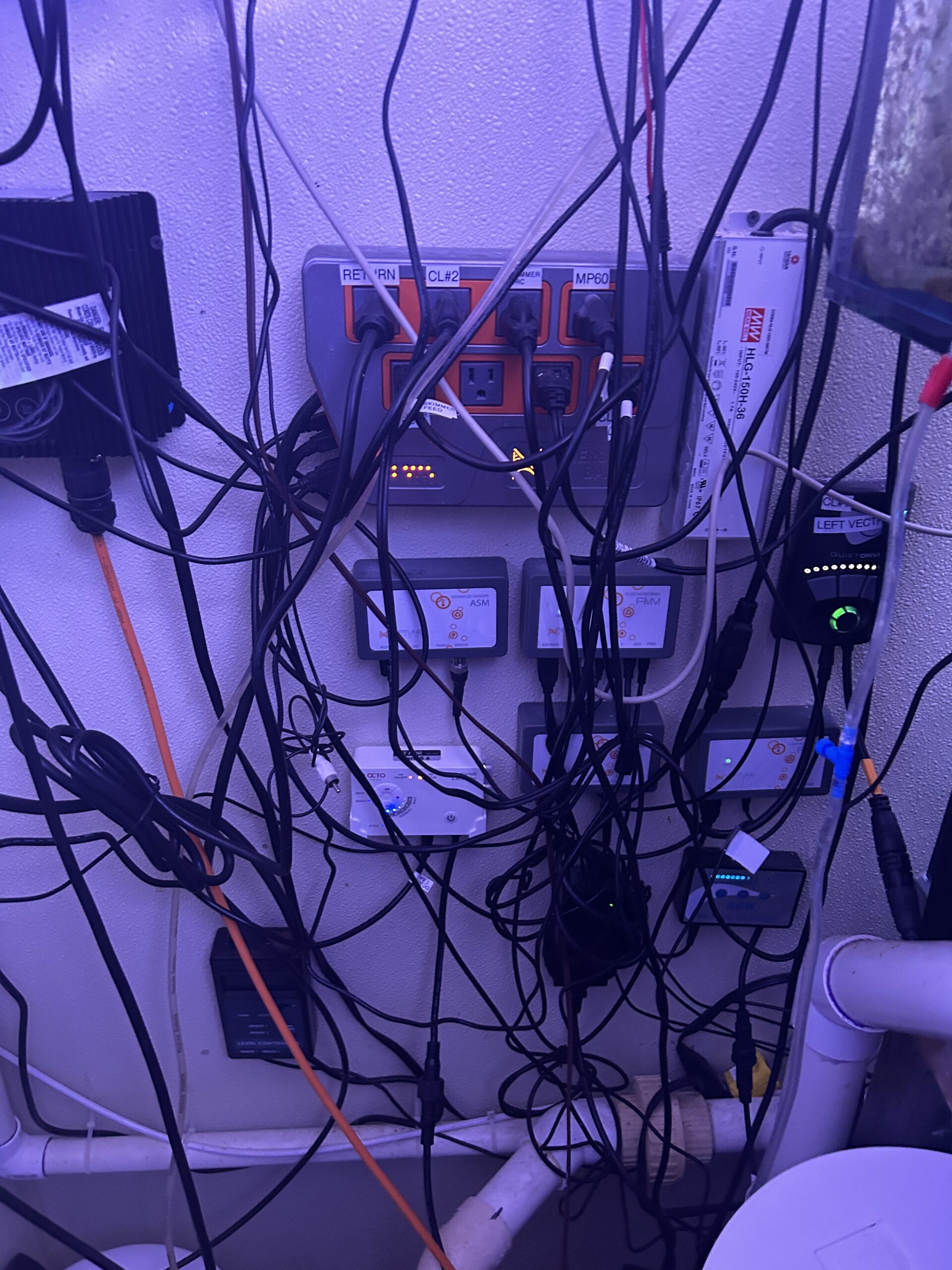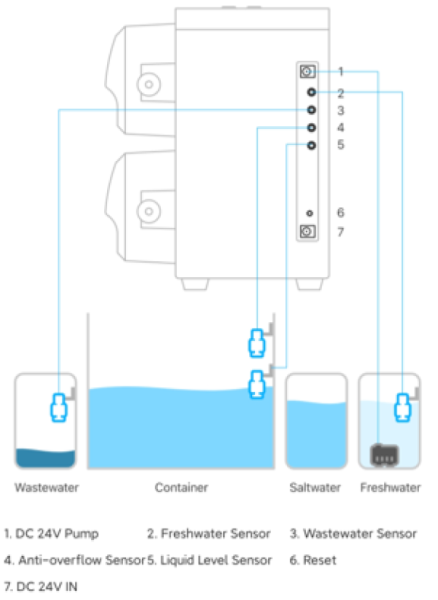As with all technology, the technology related to the hobby and maintaining a successful reef tank has also improved significantly over the decades. In the early years technology consisted of small microprocessors that were only able to measure temperature, pH, and ORP and the results could only be displayed on a small monitor attached to the tank.
Now it is possible not only to measure these parameters but also salinity, alkalinity, calcium, magnesium, water levels, and leaks to name some of the readings that can now be taken. But even more impressive is that should any of these parameters or measurements not be in the desired range alerts will be sent to your smartphone so that corrections can be made.
While we all like the bells and whistles that go with the hobby, I still have not gotten used to the shrill alarms that sound when the water level in my evaporation tank is too low or when there is a leak on the floor.

In addition to being able to measure these parameters, there are now devices that not only measure the PAR but also the spectrum of the light above our tanks as well as a pH monitor that will dose kalkwasser or another means to bring the pH up should it fall too low. Truth be told, as an OG reefer I am still in the school of using technology to monitor the tank rather than to run things completely, but I have been tempted.
Do you need technology to be a successful reefer?
When starting a new system, the question is do you need technology to be successful? The answer is no, but fortunately over time and as you see fit you can add it. Unlike lights or a protein skimmer virtually all of the technology can be added after the tank is set up and running.
Then the next question is, what exactly will adding technology do for a tank? As technology has evolved it now can do a number of things, some of which were only dreamt about when the hobby was starting. To put it in basic terms good technology can help maintain the stability of the tank and make some tasks simpler and easier to do. As one of the few things that everyone in the hobby will agree with, keeping the tank’s parameters as stable as possible goes a long way toward achieving a successful tank. Much of the technology employed today can go a long way in helping to achieve this stability.

The second critical aspect of using technology is to make things simpler so that they will be done more frequently and also potentially help save time. Having devices save time is one of the least appreciated aspects of technology, but that over time will help the hobby be more enjoyable as few among us enjoy spending time doing tasks that will be helpful for the tank but are for the most part unappreciated.
Aquadyne Octopus
There is so much technology out there and most have both pros and cons to their use, but mostly pros. In the earliest days of the hobby, technology consisted primarily of timers to turn lighting on and off and “wavemakers” that produced fluctuations in the flow coming from powerheads. The next step beyond this was a device called an “Octopus controller” by Aquadyne.
The initial device measured pH, temperature, and ORP, all of which were displayed on the screen. The later Model 3000 also measured these as well as conductivity and included timers to control the lights and flow. Compared to the technology available today this was very primitive but even with only including these functions it did make things easier and did help us keep our tanks more stable.
This system looks even more primitive when compared with the Neptune Apex/Trident, Hydros X-10, and GHL Profilux controllers. These devices not only measure most of the critical parameters in a tank, but they can also control all of the lights and electronics in a tank. When set up properly and connected to all of the devices necessary to run a tank they can indeed make things much simpler and less time-consuming.

For example, the Apex/Trident can measure not only the usual parameters, but also alkalinity, calcium, and magnesium and provide these values to your phone. And it can also send alerts when these or any of the other parameters it measures are out of the set range. When this occurs, it is possible to remotely turn on a pump to add the necessary element.
While not capable of measuring these last three parameters the Hydros and GHL units as well as the Apex can also measure the salinity and it is falling can be set up so that saltwater can be added to keep the salinity, an often neglected but crucial parameter stable. They can also be set up so if the salinity gets too high they will add freshwater in small amounts to keep the salinity stable in this regard as well.

These units can also be set up to perform one of the tasks I have found to be critical at unexpected times in that they can be set up to not only run the lighting schedule but also to shut off the lights should the temperature in the tank get too warm. While not as frequent of an occurrence as in the past when halide lamps were predominantly used, it is still useful to prevent a temperature spike from damaging a tank.
While initially, these devices required a fair amount of technical expertise to program them, this has become much simpler over the years and with the help of YouTube videos, even a luddite like myself can program them successfully to do all of the tasks promised. The only shortcomings, other than price, that I have encountered with them is that the software requires regular updating and if this is not done alerts and warnings can be missed.
Also, if a tank is solely dependent on this technology and it crashes, it may be difficult to get things to run smoothly without it. But despite this, this technology has countless fans within the hobby.
Alkatronic
If having an all-in-one system is not your preferred technology, there are still lots of other means of incorporating technology into managing a tank. The simplest of this technology only tests and monitors a single parameter and does so as often as it is programmed to do so. My favorite among these is the Alkatronic alkalinity monitor which measures alkalinity at the same time(s) each day and can be programmed to measure as often as once a day or as frequently as every two hours.

I have been using this device for over five years and it has been extremely useful in helping me maintain the alkalinity of my tank within the small desired range. Unlike most parameters which can fluctuate a significant amount without causing problems, alkalinity, especially if it is allowed to spike, can cause significant stress to many corals. So by being able to monitor alkalinity, I test every four hours, and keep it stable the stress caused by an alkalinity spike has been greatly reduced.
In addition to this, there are also single measurement devices to measure ORP, pH, salinity, and temperature. I personally utilize all of these single-measure devices in addition to a multi-parameter monitor, so that if there is an issue the redundancy in the system allows for a quick confirmation. While some may see these as unnecessary, I am a strong believer in having redundancy throughout the system.
I should note that recently a new unique single parameter device has come on the market that not only measures pH but is attached to a small pump that allows it to pump in fluid should the pH be above or below a desired value. With more and more hobbyists going back to using kalkwasser to maintain their pH levels, this may be a useful piece of technology to employ.
Robot testing devices
In addition to these single-measure devices, there are now devices that measure all of the water parameters listed above, as well as ammonia, nitrite, nitrate, iodine, and some others. These devices act as testing robots and use the same test kits commonly used in the hobby but do the tests in a more precise and calculated manner. While testing is usually boring and imprecise, these devices not only make it more interesting to watch but are also consistently precise. Well, they are as precise as our hobbyist test kits allow them to be.

While maintaining proper and stable water chemistry is critical so too is proving proper lighting and flow in a tank. In this regard, there is now technology that can produce significantly varied flow within a tank and even have it match the changes in flow that occur throughout the day. The Hydros controller I am using attaches to a variety of powerheads and can be programmed to produce a variety of flow patterns throughout the day and then a significantly reduced flow at night. This is my attempt to mimic the flow on a reef and also to keep any detritus in suspension as long as possible.
The programming on this device allows for far greater variability than was ever the case with previous “wavemakers”. Similarly, it is also now possible to program lighting so that it not only mimics the pattern of sunlight on a reef but also cloud patterns as well as moonlight. It has now been determined that a natural lunar cycle has significant health consequences for the animals on the reef including spawning. By being able to have lights replicate natural lunar cycles it may be possible for many of us to have our corals spawn in our tanks.
Lastly, there is also now technology that enables us to feed our tanks in small amounts often rather than the huge bolus of food that has been done for years and produces too much waste. These feeders can be programmed to feed multiple times a day with each feeding being as large or small as we choose. Not only is this better for the fish and corals, but it also allows us to avoid the dreaded tank sitter who overfeeds the tank. As technology goes these are relatively inexpensive and at least for me are so useful that I have one on each of my five tanks.

Technology has developed so much in this hobby that it has now achieved what was once thought unachievable: it can perform automatic water changes. To many doing water changes is the least fun, messy, and time-consuming aspect of the hobby. Fortunately, there are now at least a couple of devices on the market that allow for this to be done almost hands-free. Utilizing, timers, sensors, and water pumps as well as a reservoir, these units can help to take the drudgery out of the hobby. While I am still old school and do not trust technology, I now know of a few individuals using this technology who are quite happy with it.
Technology will continue to improve and with it so too will the technology within the hobby. The current technology is not perfect, but it is a significant improvement over where it was even ten years ago. There have been attempts at providing everything we need in one little box, that unfortunately failed. However, they provided a glimpse into what the future might hold for the hobby. Once this is achieved success in the hobby will likely take another jump forward.



